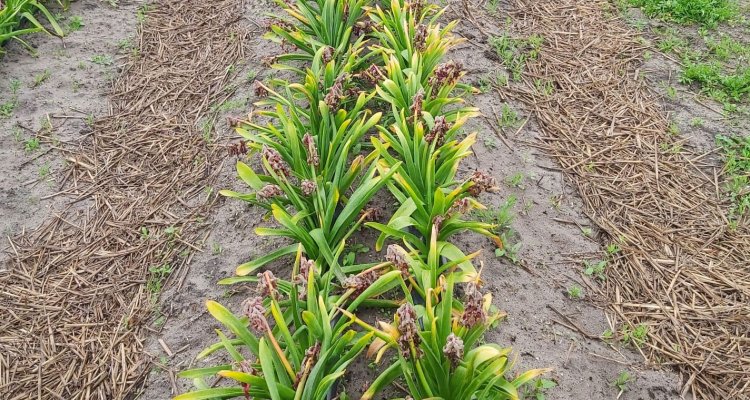
News
Good results with hyacinth cultivation in plastic trench
Hyacinth bulbs normally grow in the open ground. As a result, fertilizers may leach into the surface water. In addition, the bulbs are susceptible to soil-borne diseases and pests (such as fungi and nematodes). Research by the Greenhouse Horticulture and Flower Bulbs Business Unit of Wageningen University & Research shows that the bulbs can also be grown well in plastic trenches.
The Bollencoaster project is aimed at making bulb cultivation more sustainable. One of the components is research into the use of plastic slots. These are buried in the field at a depth of 10 to 20 centimeters and with a width of approximately 5 centimeters. There is a drip hose in the trench for watering and administering nutrients. The top of the trench is closed so that diseases, pests and unwanted water cannot penetrate. In the trench, the bulbs are planted in a substrate.
This cultivation method has many advantages in the cultivation of hyacinth. This makes targeted watering possible, and there is no leaching of water and fertilizers. In addition, fewer crop protection agents are required. The slits allow the bulbs to grow in a long row, which facilitates mechanical weed control. Because the bulbs do not grow in the ground, fungi and nematodes cannot affect the crop. Crop rotation is therefore not necessary (in conventional crops hyacinths can only grow on the same soil once every six years). As a result, growers do not have to look for a new field every year. And most importantly, the bulbs grow well in the enclosed environment.
There are also disadvantages and points of attention. For example, the soil in the trench must have sufficient nutrition and be clean. This can be done by using new substrate during each cultivation round, such as coconut peat substrate. An alternative is to use the sand in the field. However, this must first be steamed and possibly provided with biostimulants. In addition, the grower must invest in, among other things, the plastic slots and the drip system. The top of the trench sometimes appears to open, allowing rainwater to enter the trench, for example. In addition, it should be prevented that the soil around the trenches becomes impoverished: it might therefore be wise to let something else grow, for example grass, between the hyacinths.
The research into hyacinth takes place at Agrifirm-GMN in Voorhout. In the same field, a study of lilies is being carried out (both crops alternate in spring and autumn). Research is also being carried out at the WUR research location in Bleiswijk into the possibility of also cultivating other flower bulbs in this system, such as tulips, gladiolus and zantedeschia.
Bollencoaster is a four-year research program of the Horticulture & Propagation Materials top sector of the Ministry of Agriculture, Nature and Food Quality. The implementation of this Public-Private Partnership is the responsibility of a consortium of seven partners. These are: KAVB, Agrifirm-GMN, Oerlemans Plastics, Rabobank Bollenstreek, Hoogheemraadschap Rijnland, Greenport Duin & Bollenstreek and Wageningen University & Research.